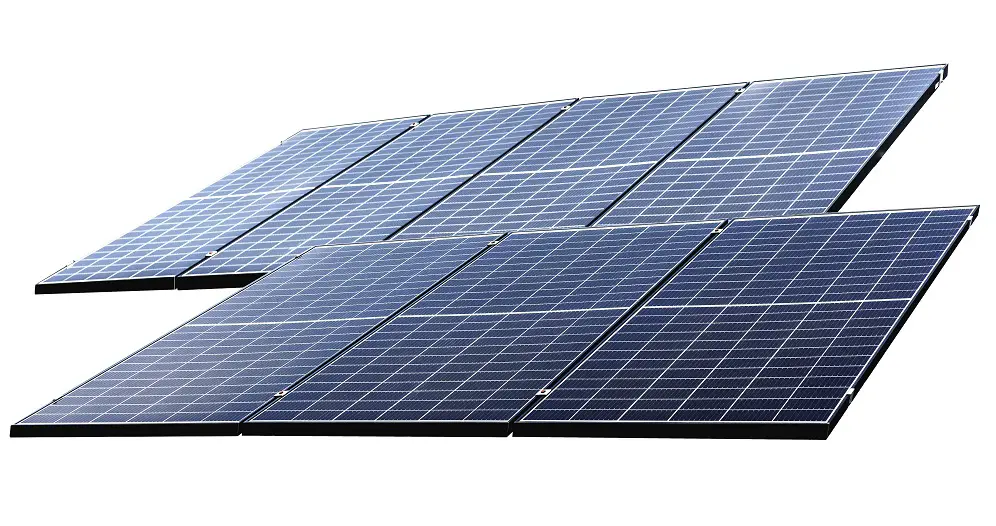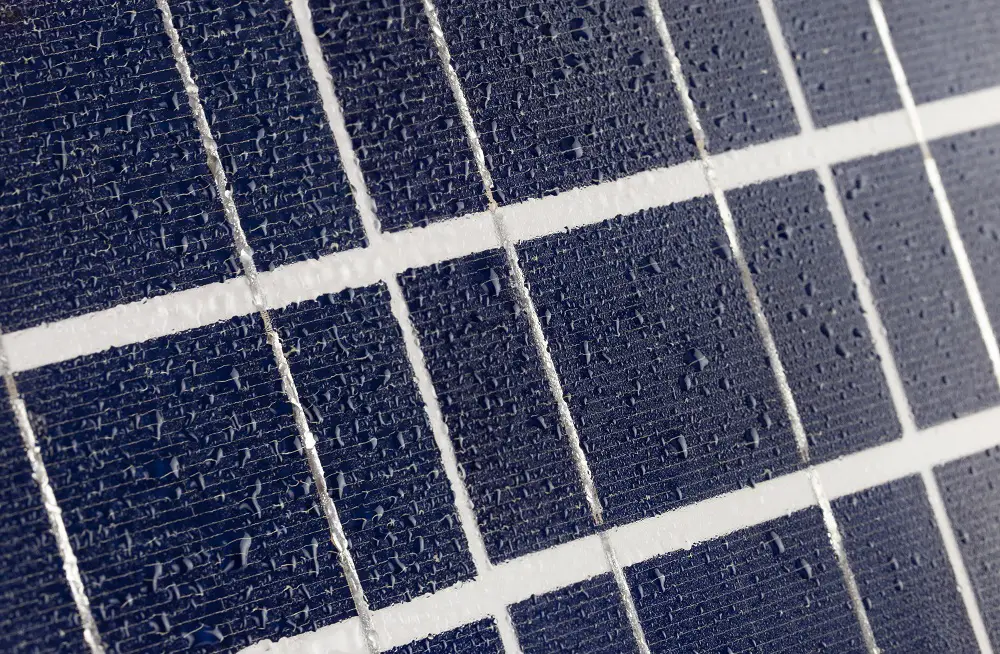Solar power is clean and efficient energy that most often requires roof-mounted panels to harness energy from sunlight. However, the weather is unpredictable; storms, hurricanes, or heavy downpours can happen at the most unexpected times.
Solar panel manufacturers design their products to withstand the worst weather conditions.
A rigid framework made of aluminum, tempered glass, and polymers is sealed together to protect the PV cells from all the elements, including rain.
Solar panels are not only waterproof, but they also withstand storm, hail, wind, and dirt to maintain their efficiency.
What are Solar Panels?

Solar panels are narrow glass sheets, often seen on roofs.
They contain a collection of PV (photovoltaic) cells – the standard amount is 60 – encapsulated in a framework. They are installed on roofs in groups called a solar array and are directed towards the sun.
They capture kinetic energy from sunlight, pass it through an inverter where it converts into useable DC electricity.
What Makes Solar Panels Waterproof

Solar panels have to be able to resist water. The silicone cells, wiring, and string connector ribbon need to be dry to generate power effectively.
All of the interior components of a solar panel are encased between a polymer-based back sheet and a toughened glass cover. An aluminum frame tightly wraps around the perimeter, fixed at every edge and corner with a powerful, waterproof sealant.
Ethyl vinyl acetate, EVA used inside the frame provides adhesion between the cells and the outer surfaces of the PV module.
The combination is tough enough to withstand virtually anything that the elements can muster.
Rigorous Testing
Solar panel manufacturers put their products through a series of rigorous tests to ensure their ability to withstand weather conditions, amongst other things.
Water Resistance
Solar panel testing is under laboratory conditions, whereby pressurized water is directed at the unit. The jets replicate the most severe outdoor conditions; the panel must have no weak points.
Thermal Cycling/Humidity Freeze Test
These are names for the environmental tests that simulate thermal stresses and the panel's ability to cope with extremes.
The panel is placed in a chamber and exposed to temperatures fluctuating between -40°f and 194°f rapidly, up to 200-times.
Hail Test
Between 2009 and 2013, less than 0.1% of installed PV systems reported any damage due to weather conditions. In the majority of these cases, the culprit was hail. Therefore stringent testing takes place to ensure solar panels have the durability to withstand hail and hurricanes.
Artificial hail is fired at the panel at speeds of 20 – 30m/s; to pass the test they must remain unaffected.
Damp Heat Test
To test the durability of solar panels in high humidity conditions. Humidity leads to corrosion and connection failure, resulting in decreased efficiency.
Solar Panels and Snow

Snow poses little threat to solar panels. Due to their positioning - they are set at an angle, snow slides right off, taking any dirt as it goes.
In especially heavy snow conditions, it is advisable to use a soft-bristled brush to scrape the majority away. Solar panels generate some power even in wintry conditions, but if sunlight can't reach the PV unit, production grinds to a halt.
Cleaning Solar Panels

If they weren't watertight, cleaning solar panels would be an impossible task.
Although they require infrequent cleaning, the framework allows debris and dust to settle in the edges and corners.
An annual or bi-annual wash should keep a solar system performing at maximum efficiency.
If a damp sponge isn't sufficient, it is safe to use a hose-pipe with a low-pressure flow. Never use high-pressure machines or abrasive cloths, both cause micro-scratches on the glass, which over time, affect output.
Waterproofing the Roof
When switching to solar power, it is not just the panels that need to be waterproof; the roof where the PV array is being installed should also be watertight. Old age and poor condition might lead to water damage and expensive repairs.
Your chosen installer will want to carry out the initial comprehensive roof inspection; they will consider the extra weight and if your joists and rafters are up to the job. Most professionals recommend that the roof is less than 10-years old.
Solar panels are fixed to mounting rails that are attached to the roof. They require substantial bolts, creating multiple holes.
Holes let in water that weaken the roof and reduce the efficiency of your panels.
Waterproofing the bolts holes is important; Installers use high-quality sealant beneath flashings to avoid any leaks.
Sealant isn't infallible; it reacts to exposure from the sun, oxidizes, expands, and contracts in changing temperatures. If sealant breaks down, the effects are time-consuming and expensive.
The removal and replacement of a standard 4kW system costs around $2000; before the cost of roof repairs.
Insist that your installers use industry-compliant methods employing asphalt roofing cement with reinforcing mesh or single-ply membranes such as PVC or EPDM.
Does Rainwater Harm the Surface of Solar Panels?
On the contrary, rainwater keeps solar panels clean; a clean panel captures more sunlight.
Small amounts of dirt and water might gather in the framework of the PV unit. As the amount grows it could turn into a muddy consistency.
It increases the probability of leakage currents and reduced performance.
Solar panel design is evolving with haste; Panasonic has developed HIT modules. Each solar panel is every bit as waterproof as its predecessor, but the no-frame design ensures rainwater flows continuously with no place to collect.
Final Thoughts
Solar panels are waterproof – and then some.
Their design ensures they resist multiple harsh climate conditions that have little effect on their ability to generate electricity.
Flexible solar panels behave in the same manner enabling campers or those living off-grid; the freedom to mount them and leave them in situ, even during heavy downpours.

